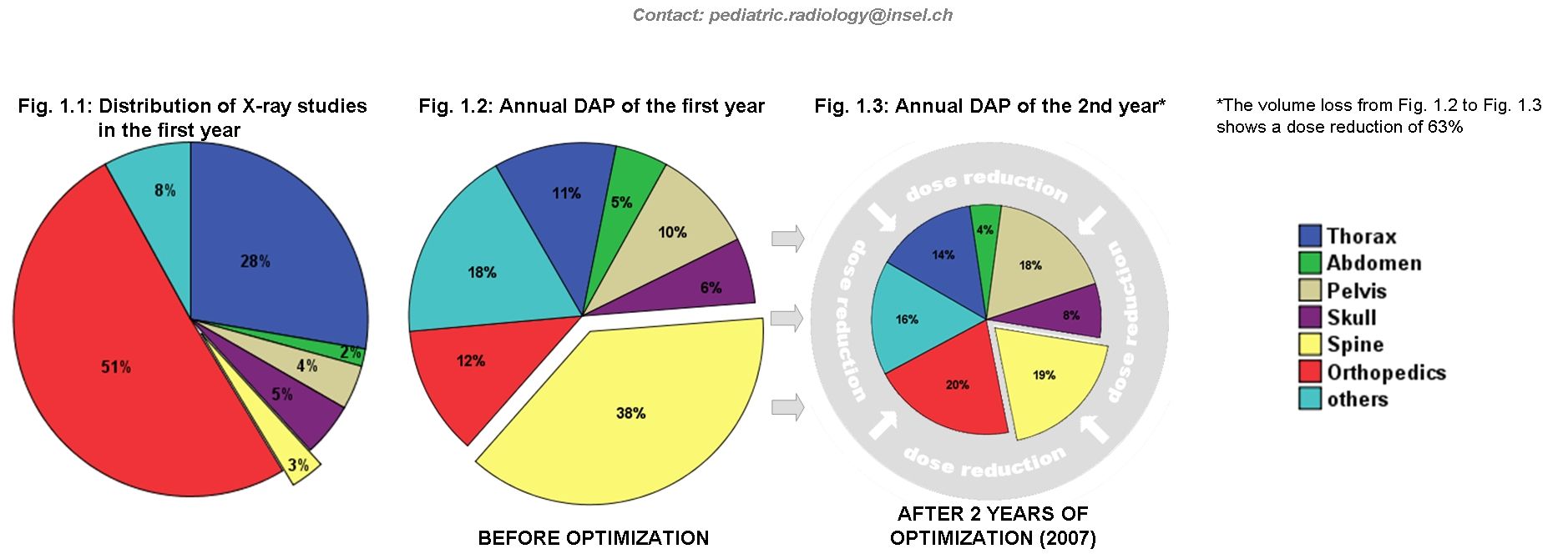Study finds lower doses equally effective and safer in children
Optimization strategies described in an RSNA poster presentation from Switzerland were found to reduce total dose exposure by 63%.
Optimization strategies described in an RSNA poster presentation from Switzerland were found to reduce total dose exposure by 63%.
Developed by the Institute of Diagnostic, Interventional and Pediatric Radiology at the University of Bern, the “EasyDose” system, which is at the center of the facility’s DoseWatchers program, can collect data from any radiation source and manage the exposure parameters. The RSNA presentation was developed by Dr. Rainer Wolf, who inherited the project as his team began monitoring radiation dose with a data retrieval system.
Wolf used the retrieved information to automatically add more than 62,000 pediatric patients into the database, allowing a prospectively designed two-year dose optimization study to reduce the radiation burden for children. During the first year, 14,145 images of 7462 patients were collected; in the second year 14,726 images taken of 7928 patients were gathered. Distribution of CR/DR studies was about 80% DR and 20% CR in the first year.
Optimizing dose then involved three steps: copper filtration, kV/mAs reduction according to image noise, and bilateral lead collimation in anteroposterior views of the spine. In the first step, a copper filtration reduced the effective dose from 0.234 mSv to 0.14 mSv. The second step reduced kV/mAs to 0.039 mSv. A third step in full-spine imaging involved use of bilateral lead collimation to block peripheral organs (breast tissue) and reduced radiation to 0.035 mSv.
Spine imaging represented only 3% of all studies (Fig 1.1), to but 38% of the dose load by dose area product (DAP) (Fig 1.2).
“This was the most dramatic difference and became the first item to attempt to resolve,” Wolf said.

The spine is a large area for exposure, so it represents a relatively larger dose than other body parts. But after two years of the dose optimization program, not only was the total DAP 63% lower, the relative DAP to the spine was reduced from 38% to 19% (Fig. 1.3).
The lower dose studies were then measured with a phantom that computed image quality for contrast and detail. The results showed the detail value remained the same for all optimized doses and only a small amount of contrast was lost.
Pediatricians who requested the studies were not informed about the dose reductions and had no complaints, with the exception of one orthopedic surgeon who wondered why some unstudied anatomy was cut off. However, when it was explained that lead collimation was used as part of the dose reduction program (and as breast cancer prophylaxis), the physician was pleased.
“Digital imaging allows lower dosing that reduces the radiation burden significantly for [the] pediatric age group, and also would benefit adult patients,” Wolf said.
The results presented were for mixed CR and DR. An even greater effect should be observed in DR alone, with perhaps half the dose used for DR compared with CR.
The Reading Room Podcast: Current Perspectives on the Updated Appropriate Use Criteria for Brain PET
March 18th 2025In a new podcast, Satoshi Minoshima, M.D., Ph.D., and James Williams, Ph.D., share their insights on the recently updated appropriate use criteria for amyloid PET and tau PET in patients with mild cognitive impairment.
Study with CT Data Suggests Women with PE Have More Than Triple the One-Year Mortality Rate than Men
April 3rd 2025After a multivariable assessment including age and comorbidities, women with pulmonary embolism (PE) had a 48 percent higher risk of one-year mortality than men with PE, according to a new study involving over 33,000 patients.